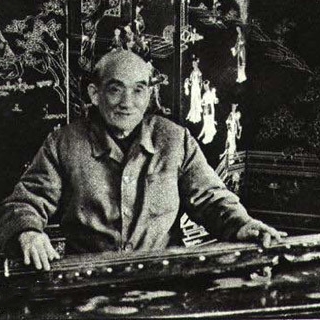Wu Jinglue

Wu Jinglue, a famous guqin player in modern times. Its performance characteristics are: beautiful and elegant, flexible and changeable. It has both melodious lyricism and wonderful twists and turns. The style is novel and fascinating. His guqin artistic attainments are profound, and in the field of guqin, he is known as "Yushan Wu School" and "a generation master of the qin altar".
When Wu Jingluo was young, he learned pipa, sanxian and other musical instruments. At the age of 20, he began to learn Guqin from Wang Duanpu. In the spring of 1936, more than 20 people including Li Zizhao, Zha Fuxi, Peng Zhiqing, Zhang Ziqian, and other famous pianists, initiated and established the "Jinyu Qin Society" with the good desire to carry forward the excellent tradition of classical music in the motherland. In the summer of the same year, Wu Jinglue joined the qin club through the introduction of Li Mingde, served as the secretary club, presided over social affairs, and taught guqin in Shanghai, Changshu and other places under the name of "Cesheng Qin Yun Room".
Wu Jinglue founded the Guqin major in the Conservatory of Music, compiled Guqin textbooks, and trained a large number of students, many of whom have become famous contemporary Guqin performers, professional teachers and theoretical researchers. In his long-term performance practice, he has also excavated and sorted out "Guangling San", "Hujia Eighteen Beats", "Yangchun", "White Snow", "High Mountain", "Flowing Water", "Pheasant Chaofei" and "Mozi's Sad Silk". He wrote an ancient qin piece, wrote "Victory Exercise", transplanted and adapted "Xinjiang Hao" and other new guqin works. He is the author of books on qin studies such as "Seven Strings Textbook", "Yushan Qin Talk" and "Guqin Improvement".
He has rich experience in identifying and repairing guqin, and is committed to the reform of guqin. The improved guqin, which has been repeatedly tested, designed and produced, has been loved and used by the majority of qin players, and has become an outstanding achievement in the development history of guqin musical instruments.
Similar artist
Involving musical instruments
Involved portfolio
Involved news
Popular artists
- 01 Zhang Xiuyan
- 02 Chen Tao
- 03 Li Muliang
- 04 Zhu Changyao
- 05 Zhang Gaoxiang
 渝公网安备 50010702504639号
渝公网安备 50010702504639号